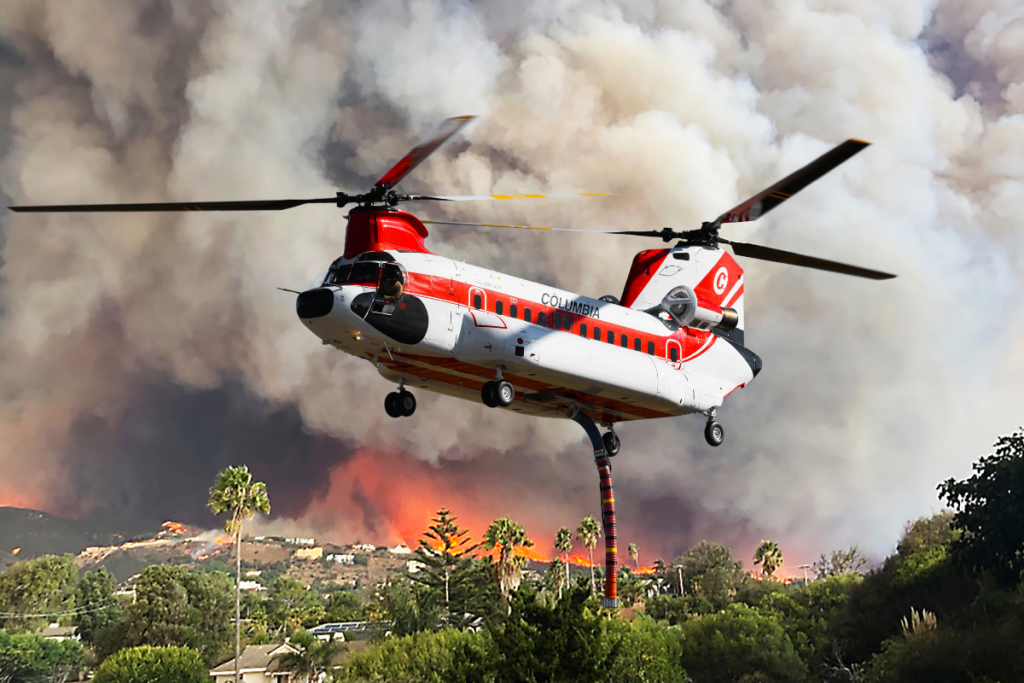
Features
Innovations
Columbia, Aurora Flight Sciences developing aerial firefighting technology
May 5, 2021 By Naomi Szeben
 Image courtesy of Columbia Helicopters
Image courtesy of Columbia Helicopters Columbia Helicopters and Aurora Flight Sciences, a Boeing Company, entered into a memorandum of understanding to jointly explore an enhanced pilot situational awareness (EPSA) degraded visual environment (DVE) flight capability on a Columbia helicopter to be used for aerial wildland fire suppression.
Fire suppression from aircraft has largely remained a clear-air, daytime endeavour. Visibility hazards, such as wildfire smoke, limit aircraft operations on fires to approximately one-third of the available day.
Columbia and Aurora aim to overcome these limitations with a new flight system that integrates multiple aircraft-mounted sensor technologies that enhance situational awareness and deliver a real-time, clear, synthetically-adapted image to the pilot.
Under the terms of the understanding, the parties expect Aurora would be responsible for developing and testing the technology while Columbia would be responsible for providing the aircraft, integration of the system, support, and operator subject matter expertise.
Once a system is developed, tested, and integrated, Columbia and Aurora plan to hold demonstrations for the U.S. Department of Interior, U.S. Forest Service, and state fire agencies with the goal of encouraging legislation and contract language that allows for the new technology’s use on the country’s growing wildfires.
The DVE flight system is expected to combine inputs from an on-board modular sensor suite with Aurora’s automated trajectory planning technology to identify safe flight paths. Data from these systems is visually represented in a transparent heads-up display mounted to the pilot’s helmet, providing navigation and critical flight data in a simple real-time display to support both daytime and night-time operations.
A 2018 report written by the U.S. Department of the Interior estimated that safe employment of aerial fire suppression during DVE conditions could reduce acres burned by one million acres a year, and reduce annual suppression costs by $300 million.